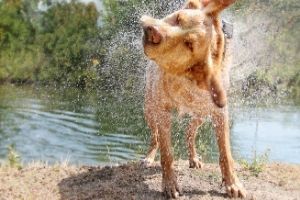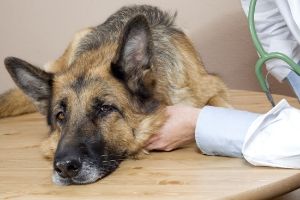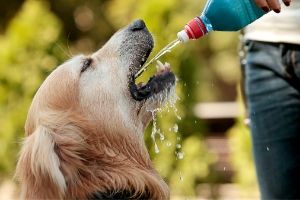As the beaches, lakes, and other recreational areas begin to reopen, many of us will be venturing into the outdoors as the summer season approaches. However, reports of increasing occurrences of Harmful Algal Blooms (HABs) in bodies of water across the United States pose a great risk for both you and your pet. If you plan on getting out and getting your dog some exercise around bodies of water, paying attention to these reports is crucial to dog wellness.
What are Harmful Algal Blooms (HABs)?
Harmful algal blooms (HABs) occur when cyanobacteria (also known as blue-green algae) rapidly grow in outdoor bodies of water and produce harmful toxins that can pose a risk to humans, animals, and the environment. HABs can have devastating effects on those who come into contact with them and they've been known to sicken humans and be fatal to dogs and livestock who are exposed to or consume water affected by blue-green algae. These toxic blooms have recently been increasing in number and frequency, especially in warm weather.

How Can My Dog Be Exposed to HABs?
Your dog can be exposed to HABs by coming into contact with affected bodies of water, such as lakes, ponds, pools, or rivers. This can occur when your dog swims or drinks affected water. Surprisingly enough, dogs are attracted to cyanobacteria and can eat the algal material in the water or lick algae caught in their fur after taking a dip in affected water.

What Are The Signs of Possible Cyanobacteria Toxin Poisoning in Dogs?
Signs of possible cyanobacteria toxin poisoning can take anywhere from a few minutes to 48 hours to occur. These signs include:
- Vomiting
- Diarrhea
- Lethargy
- Depression
- Excessive thirst
- Increased urination
In extreme cases, exposure to HABs in pets can lead to seizures, paralysis, respiratory arrest, or it can even be fatal for some pets. If your pet is experiencing any of these symptoms, contact ASPCA Animal Poison Control Center at 888-426-4435 and schedule an appointment with a veterinarian immediately.

How Can I Protect My Pet?
While planning your visit to a lake or recreational area, take note of HAB incident reports that may have occurred in the area that you are visiting, and be sure to avoid having your dog swim or drink water affected by cyanobacteria. Always bring plenty of fresh water for your dog to drink and if your pet does swim in a lake or body of water, always rinse your pet off with fresh water after water contact. When venturing to public areas, it’s always best to keep your dog leashed and close to you at all times. This will help you keep your pet in sight and minimize the chance of your pup getting into trouble.
If you have any questions about your pet’s care or need to set up an appointment, please contact us today.
Some Further Resources For HABs Are As Follows:
